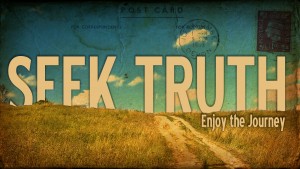Each student will be assigned a section of the novel Green Grass Running Water (pages will be divided by the number of students). The task at hand is to first discover as many allusions as you can to historical references (people and events), literary references (characters and authors), mythical references (symbols and metaphors).
My assigned pages are from 315-324, which correspond to pages 379-389 in the version that I am using. All citations here from GGRW are from the version that I am using.
“Just had a story published in New Age” (King 379).
The magazine that George claims he is published in has an identical name to the New Age Journal. This journal, however, states that it is “not affiliated with any magazine on paper.” Furthermore:
We occasionally get email from people asking about the former printed magazine named “New Age Journal.” It is our understanding that its name was changed to something like “Body Mind and Spirit,” which was later purchased by Oprah, and is no longer being published. (“About Us”)
So the magazine in GGRW, assuming that it is a real reference, no longer exists.
Photographing the Sun Dance
George attempts to photograph the Sun Dance, creating a similar incident to the one that starts on the bottom of page 138. Whereas this earlier incident ends with the Natives losing the real film, the incident with George–who uses the same tactic of giving dummy film–is exposed by Eli, who has thus learned from his uncle’s mistake.
On a related note, the Sun Dance was filmed in 2013 by the Aboringal People’s Television Network, creating controversy.
“What are you going to do, scalp me?” (King 385).
Scalping is described by Encyclopedia.com as “[t]he practice of removing the scalp, the ‘hair skinne of the head,’ from a slain enemy as a trophy, originated in ancient headhunting.” According to Native-Languages.org, colonists learned the practice of scalping from Natives and began using it against them. Nova Scotia still has a Native Scalping Law.
George here displays his view that modern Natives are barbaric and stuck in the “ice age” (King 386).
Coyote responds by saying, “Where did you ever get an idea like that?”, referencing the colonial narratives (e.g. from “film”) that fed George his views (385).
George Morningstar and George Armstrong Custer
Refer to Jane Flick’s Reading Notes under “MORNINGSTAR, George” (146) and “CUSTER, George” (149). For more context, read Custer’s biography.
“George was surrounded. For a moment he looked as if he wanted to run. Instead, he smiled and shrugged and released the snaps on the case.” (King 385)
Possible allusion to Custer’s Last Stand.
“Lionel slipped out of the jacket and handed it to George.” (King 385)
The jacket, according to Flick’s Reading Notes under “JOHN WAYNE” (147), is an allusion to both John Wayne and George Custer’s outfits (which possibly looks like this). Lionel, who wants to be like John Wayne, thus strips that allusion from himself in returning the jacket to George, who then completes his own allusion to George Custer.
“Nobody cares about your little powwow.” (King 386)
The Canadian Encyclopedia describes Powwows as “celebrations that showcase Aboriginal music, dances, dance apparel, food and crafts,” “showcase” being the key word here. That George and the tourist who also tries to take photos of the Sun Dance compare it to a Powwow shows their ignorance of and disrespect towards Native culture. Also note that George says “little powwow” with a lower case first letter, which is reminiscent of “little god” (386, 2).
“As he [George] got to the car, he turned and shouted, his mouth snapping open and shut like a trap. But the words vanished in the distance and the wind.” (King 387)
Reminiscent of this passage:
As he [Sifton] climbed out on the opposite bank, Sifton turned and raised his stick over his head. Eli could see the man’s mouth open and close in a shout, but all the sound was snatched up by the wind and drowned in the rushing water. (143)
It is thus non-Natives rather than Natives who here lose their voices among nature.
“And in the morning, when the sun came out of the east, it would begin again.” (King 388)
Another allusion to the Medicine Wheel and GGRW‘s cyclic nature.
“And, of course, there was the star.” (King 389)
Allusion to the Star of Bethlehem. Also connects to Babo’s words on page 276, who Flick states “may be one of the three Wise Men of the East, following the mysterious star/light” (145). Dr. Hovaugh and Babo’s journey to find the four Indians thus alludes to the Wise Men’s journey to find Jesus.
“All the while, he [Dr. Hovaugh] plotted occurrences and probabilities and directions and deviations on a pad of graph paper, turning the chart as he went, literal, allegorical, tropological, anagogic.” (King 389)
Blanca Chester connects Dr. Hovaugh’s actions to the “modes of literary expression that Frye develops in The Anatomy of Criticism” (50); Flick mentions the same connection on page 162 of her Reading Notes. This behaviour shows Dr. Hovaugh’s obsession with imposing order over perceived chaos and controlling Native movement with non-Native Western methodology. The “pad of graph paper” emphasizes the disconnect between his–and Frye’s–representations and that of the real world’s (King 389).
Suspected Allusion: “The [camera] case had tipped over on its side, was lying in the grass like a dead animal.” (King 386)
This sounds like an allusion to me but I have been unable to track it down, assuming that it actually is one. Please comment if you have an idea or just think I’m reading too much into it.
Works Cited
“About Us.” New Age Journal. NAJ, 2015. Web. 8 July 2015.
“George Armstrong Custer.” History. A+E Networks, 2015. Web. 9 July 2015.
“John Wayne Biography.” Bio. A+E Networks, 2015. Web. 9 July 2015.
King, Thomas. Green Grass Running Water. 1993. P. S. Toronto: HarperPerennial-HaperCollins, 2007. Print.
“Powwow.” The Canadian Encyclopedia. Historica Canada, n. d. Web. 8 July 2015.
“Scalping.” Encyclopedia.com. Highbeam Research Inc., 2015. Web. 8 July 2015.
Taylor, Paul. “The Wise Men and the Star.” Creation Today. CT, 28 Nov. 2011. Web. 9 July 2015.
“The Battle of the Little Bighorn, 1876.” EyeWitness to History. Ibis Comm., n. d. Web. 9 July 2015.



